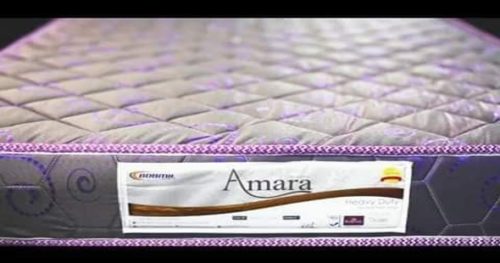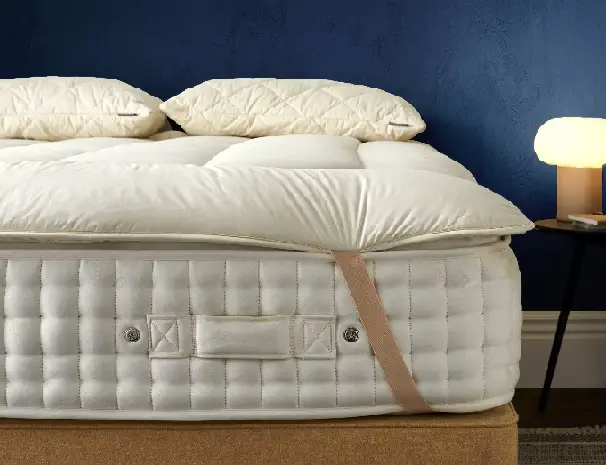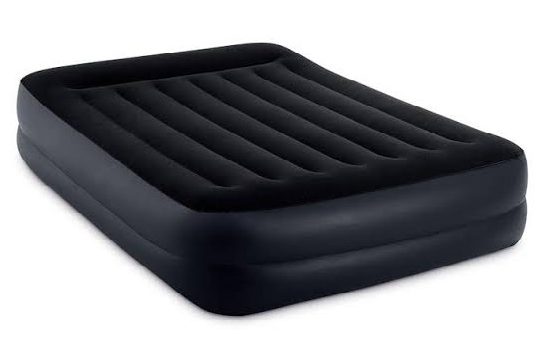Mattress support is important in ensuring the mattress maintains its structure, stays long, and offers you a comfortable night’s sleep. Some mattresses will need support while others are good without support.
Foam mattresses and latex mattresses are likely to suffer damage when weight is put on them on unstable grounds. They are heavy, breathable, and will likely break down over time if not well supported. The Bunkie board will support the mattress weight plus the weight of the person sleeping on top.
Bunkie boards through thin have sturdy materials that make them and are usually put on top of slats in the bed frame for further support.
Modern Bunkie boards are made with slats that are tightly placed with small gaps between them to allow breathing of the mattress.
Here we look at the mattress types and their need for Bunkie boards.
Table of Contents
1. Latex Mattress
Latex mattresses are made from dense and heavy material that is usually elastic. Where the latex material is in a damp place, you need air circulation and a slatted Bunkie board will provide support and breathing space for the mattress.
Latex mattresses being elastic will mold in the shape of your body and they will therefore need firm support to provide you will support as you sleep.
Latex is usually made from open-cell foam that has a hole between them to allow air circulation in the mattress.
This means to keep the latex mattress well-aerated, you need to have a slatted Bunkie board where the distance between slats is less than 2 inches.
This ensures the Bunkie board offers great support and also free movement of air.
When the bed frame slats are widely spaced, the latex mattress will sag between the slats damaging the mattress and making the bed uncomfortable.
To prevent this sagging and damage to the mattress, you need firm support like the one offered by the bunkie board.
2. Foam Mattress
Foam mattresses are dense and elastic. They will regain their shape once pressure is released from them.
Due to their weight and considering they do not have internal support, foam mattresses are likely to sag when not well supported.
A Bunkie board will provide strong support to the foam mattress and the slatted Bunkie board is the best as it will provide additional spaces for the mattress to breathe through and avoid the formation of molds.
The gaps in the slats of the Bunkie board need to be reduced to a minimum of 2-3 inches apart to ensure great support and adequate air circulation.
Where a bed frame has slats, additional support is needed to prevent the foam mattress from sagging between the slat spaces.
Slats in the bed frame are widely spaced and therefore not ideal to be used alone without further support.
Should The Bunkie Board Be Slatted?
Foam mattresses and latex mattresses need access to free air movement to avoid the formation of molds. For this reason, it is essential to provide a slatted Bunkie board to ensure the mattress gets enough air.
To provide the required support and to evenly distribute the weight on the Bunkie board, the slats need to be broad and the distance between one slat and the other should not exceed three inches.
When the space exceeds this, the mattress will start sagging between the spaces causing damage to it and also making your sleep uncomfortable.
When you put the mattress in a widely slatted bed, you will likely void the warranty given to the mattress.
How Do You Choose The Right Bunkie Board?
There are many factors to consider while buying a Bunkie board. The kind of board you need will be informed by the kind of mattress you have, where you want to place it, and how often you will be moving the bed. Some of these factors include;
1. Weight
Foam and latex mattresses are heavy. You need a Bunkie board that will not add too much weight to the bed frame.
Metallic and solid woad Bunkie boards are heavy and will add significant weight to your bed frame. Some metallic Bunkie boards will weigh as much as 40 pounds.
Plywood and particleboard Bunkie boards are the lightest and will add very little weight. They will usually weigh around 9-15 pounds which is not significant weight addition.
2. Air Circulation
Foam and latex mattresses are likely to form molds where the air is damp. For this reason, they need adequate air circulation.
Where the area you put your bed is likely to be damp, go for a slated Bunkie board but if the environment is hot and dry, a flat Bunkie board will do.
3. Portability
If you will be moving bed often, you need a Bunkie board that is easy to transport and move around. The heavy and bulky solid wood and metallic Bunkie boards are not easy to move around.
You need a Bunkie board that is slotted and can be moved as individual small units. This will also save on storage space.
4. Durability
You need to choose a Bunkie board that will last longer and not one that will need replacement every couple of years.
Metallic and solid wood Bunkie boards last the longest compared to plywood and particleboard Bunkie boards.
The longevity of the Bunkie board will also depend on the environment where it is being used.
If the environment is usually damp and moist, wooden Bunkie boards will deteriorate faster than metallic ones.
5. Weight Capacity
Since foam and latex mattresses are heavy on their own, adding weight on top means the Bunkie board must be able to withstand high weight levels.
The Metallic Bunkie bed has the highest weight capacity followed by solid wood Bunkie boards.
Plywood and particleboard bunkie boards have the least weight capacity but their capacity can be enhanced by ensuring that they are put on top of slats or platforms.
6. Price
Price is a key factor to consider as you need to buy a Bunkie bed that is affordable and will not add too much cost to the bed.
The more weight a Bunkie bed can support, the more sturdy the material used to make it and the more durable it is likely to be.
Consequently, this Bunkie board is likely to be more expensive than the others.
If the cheap option will need to be replaced after a couple of years, it may make more economic sense to buy the expensive Bunkie board once and for all.
Are There Alternatives To The Bunkie Board?
Yes, several items can be used in place of the Bunkie board yet provide the support you need for your mattress. This may include plywood, slats, and platform beds.
Plywood is thin and lightweight. In itself, one sheet of plywood may not be enough to support the mattress alone. The plywood may be put on top of the bed frame slats and will provide great support.
It will help in even weight distribution over the slats and prevent the mattress from sagging between the slats.
Some bed frames will come with slats while others will be without slats. Where the bed frame has no slats, you can buy slats to make support the mattress alone.
They are breathable and you need to ensure the gap between individual slats is as little as 3 inches otherwise the mattress will sag between the spaces.
Platform beds have a built-in support system that may be flat or slatted. You need a platform bed that is slatted for air circulation if you live in cold places.
In hot environments, a flat platform bed will give sufficient support to the mattress.
Final Thoughts
Mattress support is key to ensuring your mattress is not damaged and that your night’s sleep is as comfortable as it can be. Choose the right support system and Bunkie boards are a great choice.



